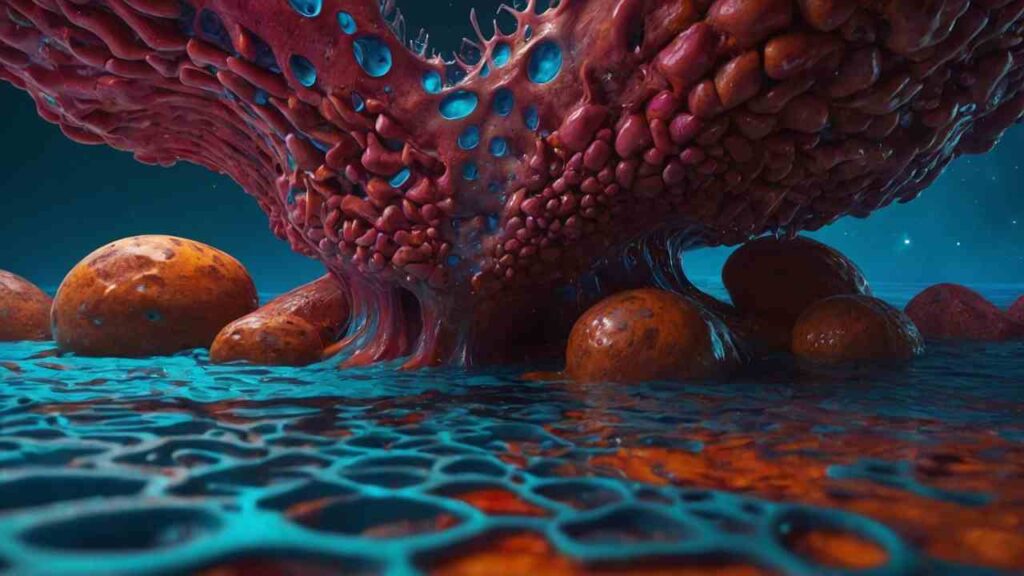Hepatitis B Skin Symptoms

Hepatitis B Skin Symptoms
Hepatitis B is a contagious liver infection that can become chronic and lead to serious illness. The Hepatitis B virus (HBV) dramatically increases the risk of developing cirrhosis of the liver, liver cancer, and death. Many people across the world with Hepatitis B don’t know they are infected, and it causes largely avoidable suffering. If more individuals, particularly those at high risk, are tested, diagnosed, and given appropriate care, more treatment and infection could be avoided. The World Health Organization has identified the burden of Hepatitis B as a significant public health problem requiring an urgent and coordinated response.
Hepatitis B is a viral infection that spreads when infected blood, semen, or any other body fluids enter the body of an uninfected person. The transmission can occur through needle pricks, sharing of sharp instruments, or sexual contact with an infected person. It is important to note that Hepatitis B cannot be transmitted through regular human contact such as sharing utensils, hugging, kissing, coughing, or sneezing. Additionally, it is not spread through food or water consumption or even breastfeeding.
It is important to recognize skin symptoms as this can help decide suitable treatments and ensure appropriate preventive measures are undertaken, seeing as the immunosuppressed are at risk of infection. Skin rashes are a common condition for those affected with hepatitis B, possibly as a signal of the immune system responding to a flare-up or new infection. In a study concerning cases wherein those affected with acute hepatitis B got infected before the age of 19, about 70% developed a skin rash. The skin symptoms will vary, but it is important to recognize them as sometimes seeing a medical professional can be delayed.
Common Skin Symptoms of Hepatitis B
Jaundice
Jaundice is a condition wherein the skin and the whites of the eyes display a yellow color. This occurs when the liver doesn’t function appropriately. Jaundice may appear at some stage during the initial phase of the disease, usually before being presented with the initial set of apparent signs. The skin turns greenish in those with a darker complexion, and this condition might go unnoticed at times. Yellowing of the skin and the eyes is typically the final phase of hepatitis B.
Rashes or Itching
Rashes and itching in the skin are common signs of skin-related symptoms of Hepatitis B. The rashes can be red, purple, or brown, and they appear like small pinpricks. These rashes can be seen anywhere on the body but are more likely to occur in the face, torso, hands, feet, and buttocks. They can be itchy; if you don’t scratch them, they will resolve on their own. Sometimes, the rashes can appear as pustules, which is a medical term for a small, elevated, inflamed, and pus-filled blister-like pimple. The rashes, itchy, painful, warmth, burning, and thinning of the skin can indicate inflammation or infection of the skin. When Hepatitis B affects the skin, the rashes on the skin due to Hepatitis B are considered the first sight of skin-related symptoms from Hepatitis B.
Palmar Erythema
Other skin conditions, such as palmar erythema, may occur but are generally less common. This condition typically presents as a reddening of the palmar aspect of the hand. In severe cases, it may even extend to the fingers. This condition may be easily dismissed as trivial. However, as it is so unusual in young people, it should again prompt further testing. Palmar erythema occurs in between 10 and 30% of those with hepatitis C, making it an important clinical sign to recognize. In the initial stages of the condition, the redness observed is more intense than at established disease. It continues to intensify in color until the inflammation subsides; the general trend is for it to remain in situ or get worse but never to regress.
Spider Angiomas
They are red marks of the skin with small blood vessels extending from the center like a spider’s web (hence the name). They are also simply known as spider nevi, and their medical term is nevus araneus. Spider angiomas can be symptoms of liver disease, as well as other conditions. They can be associated with cases of severe liver damage. There are also hereditary (non-disease) spider angiomas found in a segment of healthy people. However, because spider angiomas can be symptoms of potentially serious diseases,, it is important to see a physician if any new spider angiomas or other skin symptoms of Hepatitis occur.

Xanthelasma
Xanthelasma is a skin condition characterized by painless, yellow bumps on the upper and lower eyelids. It is a rare condition that occurs by itself or with another skin condition known as eruptive xanthomas. It is neither painful nor itchy and should not interfere with one’s vision. Typically, the xanthelasma are flat, not painful, but just cosmetically problematic. Usually, they are seen in older adults, and their chief complaint is their appearance.
Diagnosis and Treatment
Diagnostic Tests for Hepatitis B
Hepatitis B is diagnosed through blood tests, which can indicate liver health. Infected people should be referred for expert assessment. For some, this may be the hepatitis treatment clinic , but it is more likely to be a specialist in gastroenterology or infectious diseases. In patients requiring immediate treatment, a hematologist may be consulted due to the risk of both anemia and thrombocytopenia as a result of treatment. It is generally not necessary to undertake a liver biopsy to diagnose hepatitis B infection.
Treatment Options for Hepatitis B
Several different medications may be used for the treatment of hepatitis B, including antiviral medications, interferons, and liver transplants. The goal is to provide an overview of available treatments, so it’s best to talk to a health professional about the specifics. Generally speaking, antiviral medications are the first line of defense for managing hepatitis B**. These can include medications such as entecavir (barracuda), tenofovir (Viread), telbivudine, and in some cases, interferons.** Antiviral medications help to reduce the rates of viral replication and help to reduce the rate of liver damage. Interferons are injected subcutaneously once a week for a number of months and are usually recommended for people who are at higher risk of liver cancer. Other conservative treatments may include vaccination against hepatitis A and hepatitis B to prevent co-infection with other strains of hepatitis. Preventative measures include vaccines and the avoidance of any substances that may cause liver damage, which includes alcohol, as well as maintaining a healthy diet, reaching a healthy weight, avoiding the use of illicit substances, and vaccination.
Managing Skin Symptoms
There are several medications that doctors prescribe to treat the itchiness and other skin symptoms of hepatitis B. Antihistamines are a type of medication often recommended for treating mild skin symptoms. Antihistamines work by stopping the release of histamine, a chemical released by the body when it reacts to allergens, such as the hepatitis B virus. There are many antihistamines available, and the options might be discussed. Another recommended medication is the high-potency topical corticosteroid ointment that can be used for a limited amount of time to relieve itching and irritation. Furthermore, some primary care doctors may suggest broad-spectrum anti-bacterial ointments, but they are typically unnecessary or practical. Restricting oneself from scratching the skin, keeping the skin clean and cool, and wearing comfortable loose clothing are also advised to minimize the discomfort associated with the skin symptoms. If one cannot find relief from the skin symptoms, consider consulting and seeing a dermatologist to evaluate one’s condition.
Bibliography
- Pattyn, J., Hendrickx, G., Vorsters, A., & Van Damme, P. (2021). Hepatitis B vaccines. The Journal of infectious diseases, 224(Supplement_4), S343-S351. (https://academic.oup.com/jid/article-pdf/224/Supplement_4/S343/40481513/jiaa668.pdf)
- Imanbaeva, L. A., & Buranchieva, A. A. (2022). Clinical and epidemiological characteristics of the course of acute viral hepatitis b and unverified hepatitis in persons infected with the herpes simplex virus. European Journal of Natural History, (4), 8. (https://s.world-science.ru/pdf/2022/4/34280.pdf)
- Yeh, J. W., Yang, H. S., & Yang, C. C. (2020). Dermatological diseases associated with Hepatitis B virus infection. Dermatologica Sinica. (https://www.dermsinica.org/article.asp?issn=1027-8117;year=2020;volume=38;issue=3;spage=142;epage=150;aulast=Yeh)
- Pavlovic Markovic, A., Stojkovic Lalosevic, M., Mijac, D. D., Milovanovic, T., Dragasevic, S., Sokic Milutinovic, A., & Krstic, M. N. (2022). Jaundice as a diagnostic and therapeutic problem: A general practitioner’s approach. Digestive Diseases, 40(3), 362-369. (https://karger.com/Article/FullText/517301)
- Coffin, C. S. (2022). Gaps in Hepatitis B Evaluation and Treatment. Gastroenterology & Hepatology. (https://www.ncbi.nlm.nih.gov/pmc/articles/PMC9666794/)
- Nguyen, M. H., Wong, G., Gane, E., Kao, J. H., & Dusheiko, G. (2020). Hepatitis B virus: advances in prevention, diagnosis, and therapy. Clinical microbiology reviews, 33(2), 10-1128. (https://www.ncbi.nlm.nih.gov/pmc/articles/PMC7048015/)
- Tuaillon, E., Kania, D., Pisoni, A., Bollore, K., Taieb, F., Ontsira Ngoyi, E. N., … & Van de Perre, P. (2020). Dried blood spot tests for the diagnosis and therapeutic monitoring of HIV and viral hepatitis B and C. Frontiers in Microbiology, 11, 373. (https://www.frontiersin.org/articles/10.3389/fmicb.2020.00373/full)






